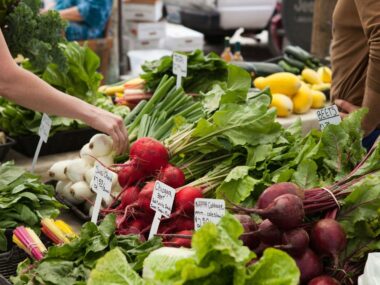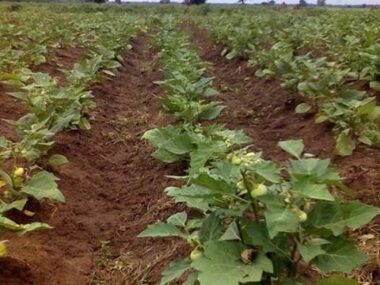The landscape of agriculture is often dominated by large-scale operations and industrial farming, but small farmers play a crucial role in feeding the world. Their resilience, innovation, and sustainable practices contribute significantly to local economies and communities. Here, we explore inspiring success stories of small farmers who have overcome challenges and created thriving, sustainable agricultural enterprises.

1. The Story of Joe and Sally: Organic Farm Pioneers
Joe and Sally, a couple from a rural town in Vermont, decided to leave their corporate jobs and
pursue their passion for organic farming. Starting with a small plot of land inherited from Joe’s grandparents, they focused on growing organic vegetables and fruits.
Key Strategies:
- Sustainable Practices: They adopted organic farming methods, using compost and natural pest control.
- Community Engagement: They actively participated in local farmers’ markets and community-supported agriculture (CSA) programs.
- Education and Workshops: They offered workshops on organic farming techniques, attracting a loyal customer base.
Outcomes:
- Joe and Sally’s farm now supplies fresh produce to local restaurants and grocery stores.
- They have expanded their CSA program, providing healthy food to hundreds of families.
- Their farm has become a model for sustainable agriculture in the region.
2. Maria’s Micro-Farm: Urban Agriculture Success
Maria, a single mother living in the heart of Chicago, transformed her small backyard into a thriving micro-farm. With limited space, she focused on intensive urban farming techniques to grow a variety of herbs, vegetables, and flowers.
Key Strategies:
- Vertical Gardening: Using vertical gardening techniques, Maria maximized her limited space.
- Aquaponics: She integrated an aquaponics system to grow vegetables and raise fish simultaneously.
- Social Media Marketing: Maria used social media to market her produce, sharing recipes and gardening tips.
Outcomes:
- Maria’s micro-farm provides fresh produce to her community, promoting urban agriculture.
- She has built a strong online presence, with a large following on social media.
- Maria’s success has inspired other urban dwellers to start their own micro-farms.
3. The Rodriguez Family: Coffee Farming Excellence
In the highlands of Colombia, the Rodriguez family has been cultivating coffee for generations. Facing challenges such as fluctuating market prices and climate change, they decided to innovate and focus on quality over quantity.
Key Strategies:
- Specialty Coffee Production: They transitioned to producing high-quality, specialty coffee beans.
- Direct Trade Relationships: The family established direct trade relationships with international buyers, ensuring fair prices.
- Eco-Friendly Practices: They implemented eco-friendly practices, such as shade-grown coffee and water conservation.
Outcomes:
- The Rodriguez family’s coffee is now sold in premium markets around the world.
- They have achieved financial stability and improved their standard of living.
- Their farm has become a beacon of sustainable coffee production.
4. Rajesh’s Rice Revolution: Sustainable Innovation in India
Rajesh, a small farmer in Tamil Nadu, India, faced the perennial problem of water scarcity. Determined to find a solution, he adopted the System of Rice Intensification (SRI), a method that uses less water and increases yields.
Key Strategies:
- System of Rice Intensification (SRI): Rajesh trained other farmers in this innovative technique, which involves planting fewer seeds and using organic fertilizers.
- Water Management: He implemented efficient water management practices, such as alternate wetting and drying.
- Collaborative Efforts: Rajesh formed a cooperative with other small farmers to share resources and knowledge.
Outcomes:
- Rajesh’s rice yields increased significantly, ensuring food security for his family and community.
- The cooperative has grown, benefiting hundreds of farmers in the region.
- Rajesh’s efforts have been recognized by agricultural organizations, bringing attention to sustainable farming practices.
5. Sarah’s Sheep Farm: Diversifying Livestock Production
Sarah, a small farmer in New Zealand, started with a modest flock of sheep. Facing market saturation and price volatility, she diversified her operations to include wool production and agritourism.
Key Strategies:
- Value-Added Products: Sarah began producing high-quality wool and wool products, such as yarn and garments.
- Agritourism: She opened her farm to visitors, offering farm tours, sheep-shearing demonstrations, and farm stays.
- Online Sales: Sarah set up an online store to sell her wool products and farm experiences.
Outcomes:
- Sarah’s diversified income streams have stabilized her financial situation.
- Her farm has become a popular tourist destination, attracting visitors from around the world.
- Sarah’s story has inspired other livestock farmers to explore diversification.
6. The Green Family: Embracing Agroforestry
The Green family, operating a small farm in Oregon, faced soil degradation and declining productivity. They turned to agroforestry, integrating trees and shrubs into their farming system.
Key Strategies:
- Alley Cropping: They planted rows of trees with crops grown in between.
- Silvo pasture: The family combined tree planting with livestock grazing.
- Soil Restoration: They focused on restoring soil health through cover cropping and organic amendments.
Outcomes:
- The Green family’s farm productivity has increased, with improved soil health and biodiversity.
- Their farm now produces timber, fruits, and livestock, providing multiple income streams.
- The Greens have become advocates for agroforestry, educating other farmers about its benefits.
7. Ahmed’s Date Farm: Desert Farming Success
Ahmed, a farmer in Morocco, inherited a small date farm in a harsh desert environment. Faced with extreme temperatures and limited water, he implemented innovative irrigation techniques.
Key Strategies:
- Drip Irrigation: Ahmed installed drip irrigation systems to efficiently use water.
- Solar Power: He utilized solar panels to power his irrigation pumps.
- Crop Diversification: Ahmed introduced other drought-resistant crops, such as figs and olives.
Outcomes:
- Ahmed’s farm has thrived, with increased date production and additional income from other crops.
- His use of renewable energy has reduced costs and environmental impact.
- Ahmed’s success has demonstrated the potential of sustainable farming in arid regions.
8. Emily’s Flower Farm: Niche Market Success
Emily, a small farmer in rural England, turned her passion for flowers into a successful business. She focused on growing heirloom and specialty flowers for local markets and events.
Key Strategies:
- Heirloom Varieties: Emily grew unique and rare flower varieties that were in high demand.
- Local Partnerships: She partnered with local florists and event planners.
- Seasonal Workshops: Emily hosted seasonal flower arranging workshops, attracting flower enthusiasts.
Outcomes:
- Emily’s flower farm has become a sought-after supplier for weddings and special events.
- Her workshops have built a loyal community of customers.
- Emily’s farm is now a model for niche market success in agriculture.
Conclusion
These success stories highlight the resilience, innovation, and adaptability of small farmers around the world. By embracing sustainable practices, diversifying their operations, and engaging with their communities, these farmers have not only survived but thrived. Their stories serve as an inspiration to others, demonstrating that with creativity and determination, small-scale farming can be both profitable and sustainable.










